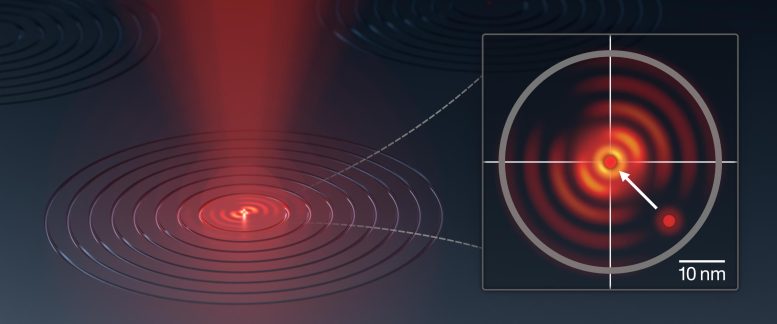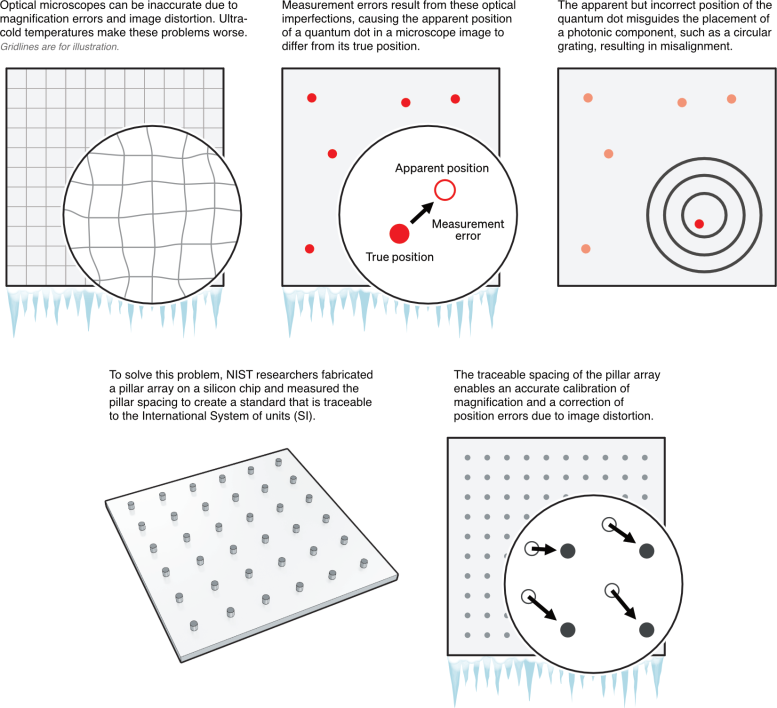
Accurate alignment of quantum dots with photonic components is critical for extracting the radiation emitted by the dots. In this illustration, a quantum dot centered in the optical “hotspot” of a circular grating (center dot in the inset) emits more light than a dot that is misaligned (off-center dot in the inset). Credit: S. Kelley/NIST
Traceable microscopy could improve the reliability of quantum information technologies, biological imaging, and more.
Devices that capture the brilliant light from millions of quantum dots, including chip-scale lasers and optical amplifiers, have made the transition from laboratory experiments to commercial products. But newer types of quantum-dot devices have been slower to come to market because they require extraordinarily accurate alignment between individual dots and the miniature optics that extract and guide the emitted radiation.
Breakthrough in Quantum Dot Alignment
Researchers at the National Institute of Standards and Technology (NIST) and their colleagues have now developed standards and calibrations for optical microscopes that allow quantum dots to be aligned with the center of a photonic component to within an error of 10 to 20 nanometers (about one-thousandth the thickness of a sheet of paper). Such alignment is critical for chip-scale devices that employ the radiation emitted by quantum dots to store and transmit quantum information.
Enhancing Quantum Device Performance
For the first time, the NIST researchers achieved this level of 
Illustration showing how traceable calibration of an optical microscope can correct for instrument imperfections that would otherwise result in misalignment of quantum dots with photonic components. Credit: S. Kelley/NIST
The NIST team created two types of traceable standards to calibrate optical microscopes—first at room temperature to analyze the fabrication process, and then at cryogenic temperatures to measure the location of quantum dots. Building on their previous work, the room-temperature standard consisted of an array of SciTechDaily